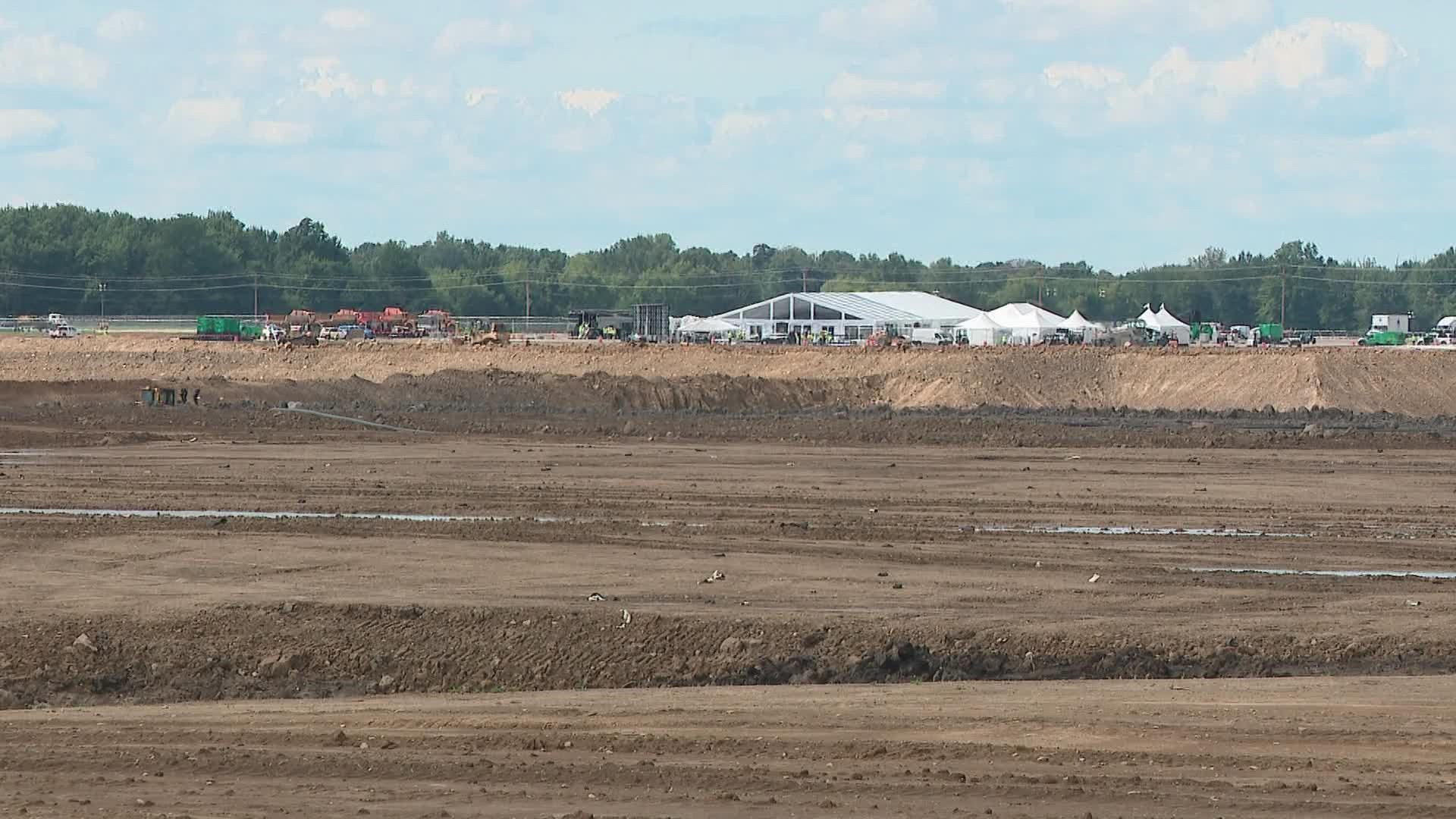COLUMBUS, Ohio — Approximately 7,000 construction workers will be descending on Licking County to build Intel’s new chip factory. That will be followed by 3,000 employees to work at the site beginning in 2025.
The Ohio Department of Transportation is expanding state Route 161 at Interstate 270 toward New Albany to ensure the roads can handle the increased traffic.
In addition, road widening projects along Clover Valley, Mink Street, Green Chapel Road and Jug Street have already begun.
But it's beyond that footprint that transportation experts are looking to find the best way to get people to and from the Intel site.
"Just expanding roads and highways won't do it," Dr. Harvey Miller of the Ohio State Center for Urban and Regional Analysis said.
He says the law of traffic congestion proves it.
"The law of traffic congestion says that if you expand roads and highways, all you get is more traffic," Miller said.
Among the traffic solutions he suggests is rapid transit in the form of dedicated bus lanes on the freeway that would allow commuters to park and ride directly to Intel without stopping.
"We could build bus rapid transit a lot cheaper and a lot quicker and Columbus is already thinking about it," he said.
The Mid-Ohio Regional Planning Commission says it's looking at a combination of different transportation models to solve the traffic problem.
One consideration: How far will people need to travel from home to Intel?
"We are really looking at this in that 20,40, 60-hour commute rings and really what each ones needs," Thea Ewing, Chief Regional Development Officer with MORPC, said.
Transportation planners say they are working with Intel to better understand the traffic patterns and its other plants to help determine what could work here. The biggest unknown, they say, is where the housing will be built.
"What makes it easier to utilize walking to work, biking to work and taking transit to work is really how housing and neighborhood development happens," says Kimberly Sharp, Senior Director of Development with the Central Ohio Transit Authority.
MORPC’s Metropolitan Transportation Plan identified $31.8 in expected resources for transportation projects through 2050.
Residents in the area have raised concerns about increased traffic problems because of Intel. Those who study transportation planning say the amount of semitractor-trailer traffic that Intel will likely produce is far less than existing companies.
"Don't panic. Don't give a knee jerk reaction because you'll just end up hurting yourself in the long run," Matt Hill of the Licking County Area Transportation Study said.
The LCATS board meets Tuesday to discuss the transportation needs of the area. You can join the meeting via Zoom by this link.

